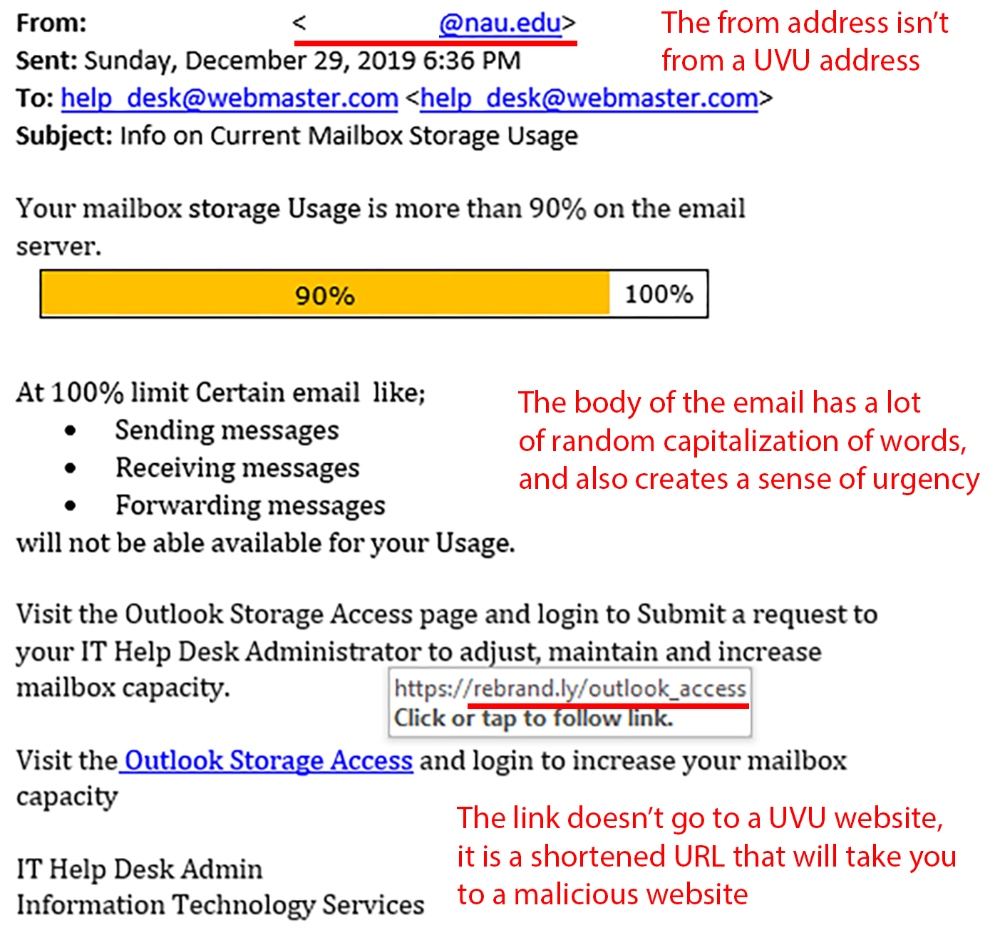What is it?
While most of the spam categories covered on this website could also be considered
malicious, this category will specifically look at emails that are designed to harm
you, your computer, or UVU. These kinds of emails might have malware attached to them,
they might try and collect sensitive student, employee, or faculty information using
manipulative and fraudulent practices, or they could include links that take you to
malicious websites. Typically, these kinds of malicious emails use a strong sense
of urgency to trick you into opening malicious files or clicking on malicious links.
If you identify one of these kinds of emails in your inbox, it is very important that
you don't click on anything in the email or interact with it in any way, other than
forwarding it to the report spam mailbox and deleting it.
Tips for identifying malicious emails:
- Look at the from address. A lot of the time malicious emails will look like they're coming from UVU, but won't
be from a UVU email address.
- See where links are going before you click them. Most malicious emails you'll receive will have some kind of link that the sender
is trying to trick you into clicking on. Hover over links before clicking on them
to make sure they go where you think they're going.
- Look for a false sense of urgency. Malicious emails tend to make false claims, such as your email storage is full, or
your password is expiring, in order to trick you into clicking on a link.
- Watch out for misspellings. It is common for malicious emails to have misspellings in order to avoid spam filters.
- Don't interact with attachments until you've verified it's a legitimate email. Malicious emails can look very legitimate, so it's very important that before you
open any attachments you make sure the email doesn't raise any red flags.
